研报:外汇期权波动率偏斜现象的形成机理和影响
2019-03-18 13:20:09|新浪财经-自媒体综合|外汇
芝加哥商品交易所研报:外汇期权波动率偏斜现象的形成机理和影响
原创:市川新田三丁目
译者 王为
文中黑字部分为原文,蓝字部分为译文,红字部分为译者注释或补充说明
FX Opt
芝加哥商品交易所研报:外汇期权波动率偏斜现象的形成机理和影响
原创:市川新田三丁目
译者 王为
文中黑字部分为原文,蓝字部分为译文,红字部分为译者注释或补充说明
FX OPTions Skews: Economics and Implications
By Erik Norland
提示:译文中如无特别说明,在提到看跌期权和看涨期权的时候,指的是价外程度一致的看涨期权和看跌期权。
什么是价外程度一致?
比如美元/日元的一年期远期汇率为110.00,那么行权价为110.00的美元/日元看跌或看涨期权,即看涨或看跌一年后日元/美元汇率的期权就被称为平价期权。价外看涨期权的行权价就是美元/日元的行权汇率要超过110.00,比如113.00,这个价外程度等于300个基本点=113-110;价外看跌期权的行权价就是美元/日元的行权汇率要低于110.00。因此与价外看涨期权进行对比的价外看跌期权的行权价与110.00这个平价的偏离程度也应该是300个基本点,即价外看跌期权的行权汇率应该为110.00-3.00=107.00,也就是说只有价外程度一致的看涨期权和看跌期权才能进行对比。
Nearly all options markets exhibit some kind of natural skewness. For example, out-of-the-money (OTM) put options on equity index futures are typically more exPEnsive than OTM call options: inveSTors typically fear a sudden fall in stock prices more than a sudden rise and, hence, are willing to pay more for downside than upside protection. In agricultural markets, skew tends to work the opposite way. On corn, soy and wheat options, for example, OTM call options are usually more expensive than OTM puts. Food buyers fear a sudden spike in the price of these crops in the event of a bad harvest more than farmers fear a sudden price decline in the event of an exceptionally good harvest.
几乎所有的期权市场都在某种程度上展示出其自然形成的波动率偏斜现象。例如,股票指数期货合约的价外看跌期权的期权费一般总是远远高于价外看涨期权的期权费,因为投资者更担心股价的下跌而不是上涨,因此愿意付出高的代价以规避股价下跌风险,而不是防范股价涨得更高。但是,农产品期权的波动率偏斜方向往往正好相反,比如,棉花、大豆和小麦期权的价外看涨期权的期权费一般总是远远高于价外看跌期权的期权费,因为农产品的买家对农产品价格因为收成不佳而暴涨的担心程度远超农家担心因为收成过好因而导致农产品价格出现下跌的程度。
Currency options markets are quirkier than either equity or agricultural options markets. Generally, traders fear a sudden drop in most currencies versus the U.S. dollar (USD) more than a sudden rise. Among the major currencies, the euro, pound and Australian and Canadian dollars tend to skew negatively versus USD, meaning that OTM put options tend to be more expensive than OTM calls. The Japanese yen and Swiss franc tend to have the opposite skew. Yen and franc OTM call options are often more expensive than OTM puts. For all six currencies, the degree of skewness varies over time, driven to a large extent by two factors: interest rate DIFferentials and political risks.
外汇期权市场的情况要比股票期权或农产品期权市场更复杂一些。一般来讲,交易员更担心大多数货币对美元的汇率突然出现下跌而不是上涨。在各主要货币中,欧元、英镑、澳大利亚元以及加拿大元对美元的期权往往呈现负波动率偏斜的现象,也就是在价外程度相同的情况下,价外看涨期权的期权费通常远低于价外看跌期权的期权费。而日元和瑞士法郎对美元的期权则为正波动率偏斜,即在价外程度相同的情况下,日元和瑞士法郎对美元的价外看涨期权的期权费通常远高于看跌价外期权的期权费。这六个货币对美元的期权波动率偏斜程度因时而动,很大程度上受两个决定因素的影响:该货币与美元的利差以及政治风险。
This paper also addresses another question: is option skewness (also referred to as “risk reversal”) a useful indicator of whether a currency will strengthen or weaken versus USD? For example, if OTM put options become extremely expensive with respect to OTM call options, is that a sign that a given currency is likely to crash versus USD or that the currency might be oversold and is about to rebound? Our analysis doesn’t provide a definitive answer to these questions but might nevertheless offer some useful insights.
本文还会涉及到另一个问题:期权的波动率偏斜,又被称为期权的“风险逆转”,是否是有效预测某货币对美元的汇率升值或贬值的指标?例如,如果某货币对美元的价外看跌期权的期权费报价明显超过价外看涨期权,这是否意味着该货币对美元的汇率有可能出现大跌?抑或,汇率已经处于超卖状态,即将出现上涨?文中的分析并没有给出明确的答案,但应有可能为找到这些问题的答案提供一些有用的线索。
The Economics of Currency Options
外汇期权的运行机理
The yen (JPY) and franc (CHF) are the two lowest interest rate currencies where OTM calls tend to be more expensive than OTM puts. Both Japan and Switzerland are famous for good food, great skiing and exceptionally low – sometimes even negative -- interest rates. This means that the JPY and CHF are often used as funding currencies. Investors often borrow funds in JPY or CHF and lend them elsewhere in the world where interest rates are higher, hoping to pocket the interest rate differential (or “carry”). Doing so can be profitable so long as the value of the accumulated carry exceeds any relative appreciation in the value of these two currencies. However, as investors learned in the fall of 1998 and several times after, the downside can be enormous when there is a sudden liquidation of carry trades that sends the value of these funding currencies soaring. As such, OTM call options on JPY and CHF, which provide downside protection to anyone engaged in such a trade, tend to be more expensive than OTM puts.
日元和瑞士法郎是全球利率水平最低的两个货币,其价外看涨期权的期权费往往高于价外看跌期权。日本和瑞士两国均以美食天国,滑雪胜地以及利率水平超低,有时甚至是负利率而“闻名遐迩”。因此,日元和瑞士法郎经常被用作融资货币,投资者常见的做法是借入日元或瑞士法郎,然后把借进来的头寸投放到全球其他利率水平高的国家,寄希望于获取利差收益,这也就是所谓的“利差交易carry trade”(原文过于简略,没说太清楚。利差交易的操作原理是借低利率的货币,比如日元,然后通过外汇互换交易将即期日元头寸转换成美元,然后投资美元标价的资产,比如美国国债,过一段时间后可以将投资的美国国债卖掉,按照先前叙做的互换交易确定的汇率将美元再换回日元,这样就消除了投资期间的汇率波动风险。当然如果汇率水平对投资者有利的话,也可以继续持有美国国债,同时展期叙做美元/日元互换交易。由于美元利率在所有发达国家中属于最高水平,投资者的净收益=美国国债的票息收益-美元/日元互换交易成本,净收益如果高于投资者买进同期限日本国债的收益率,那么这笔交易就是合算的。)只要利差收益加在一起超过这两个货币对汇率的升值幅度,投资者这样做就是有利可图的。(这种做法是这样的,比如投资者的本币为日元,然后通过即期外汇交易,将即期日元头寸转换成美元,然后投资美国国债。由于做的不是前面注释中说的外汇互换交易,因此,这笔投资美元国债的交易其实是存在专业术语中所称的“汇率风险敞口”,也就是未来将投资的美国国债卖掉再换回日元的汇率并没有事先确定下来。如果在此期间,美元/日元的即期汇率出现贬值,也就是日元/美元升值,升值幅度超过了美国国债和同期限日本国债收益率之间的利差,那么这笔交易就是不合算的,投资者还不如直接用手中的日元买日本国债算了。因此原文中所指的做法是有汇率波动风险的。)
但是由于投资者在1998年秋季以及在那之后的几次外汇市场动荡中学到了血的教训,如果利差交易突然遭遇集中平盘(利差交易的目的是为了赚取两个国家利率水平之间的利差,因此总会有平仓的那一天,平仓就是把高息货币标价的资产卖掉,买回原先融资进来的低息货币,然后还给融出方。但如果是平仓不是有序的,而是由于市场担心汇率突发大幅波动,就会有人抢跑,集中抢购融资货币平掉自己的利差交易头寸,而来不及的买进头寸的投资者就会错失平仓机会遭受浮动亏损,为了尽可能减少损失,也会加入抢购的行列,结果造成融资货币对美元的汇率更快地上升,形成恶性循环。),从而导致原先因为利率成本低才被借进来的融资货币对美元的汇率大幅飙升,那么利差交易就有可能会给投资者带来巨大的损失。由于日元和瑞士法郎的价外看涨期权由于能为投资者的利差交易进行汇率保值,因此其价外看涨期权的期权费往往高于价外程度相同的价外看跌期权的期权费。(在利差交易中,除了可以采取外汇互换交易的方式将远期买回日元卖出美元的汇率提前固定下来,从而避免期间汇率波动的风险,另一个做法是提前买入日元/美元的看涨期权,这两种做法的保值效果是一样的;)
The degree to which OTM call options on JPY or CHF are expensive or cheap versus OTM puts is closely related to the interest rate gap between these currencies and the U.S. dollar (Figures 1 and 2). When U.S. rates are much higher than Japanese rates, as they were before 2009, JPY OTM calls tend to be much more expensive than JPY OTM puts. Between 2009 and 2015, when U.S. rates hit zero and were close to those in Japan, the skewness mostly went away. Since December 2015, when the Federal Reserve (Fed) began tightening, the yen’s positive skewness has made a reappearance. Indeed, during last fall’s equity selLOFf, the yen surged versus the USD, perhaps surprising some investors – but probably not those old enough to remember the yen’s 15% two-day spike versus USD in October 1998.
日元和瑞士法郎对美元的价外看涨期权的期权费与价外程度相同的价外看跌期权相比是贵还是便宜与这两个货币与美元之间的利差密切相关,见图1和图2。如果美元的利率水平明显高于日元,就像2009年前一样,日元对美元的价外看涨期权的期权费往往就会远高于价外程度相同的价外看涨期权。在2009-2015年期间,美元的利率水平触及零,接近当时的日元利率水平,日元对美元期权的波动率偏斜现象基本上就销声匿迹了。在2015年12月份美联储开始收紧货币政策后,日元对美元期权的波动率偏斜现象又重现江湖。在去年秋季美国股市遭受重创期间,日元/美元的汇率大涨,当时可能令一些投资者感到震惊,但日元大涨持续的时间可能还不算长,不足以让人回想起1998年10月日元/美元的汇率在两天内暴涨15%的壮举。
Figure 1: Yen’s “Natural” Positive Skewness Versus USD Isn’t Natural, it’s Interest-Rate Driven.
日元对美元期权的波动率偏斜现象并非自然形成的,而是受日元和美元之间的利差水平驱动
The franc follows a similar pattern. It ceased to be a funding currency from 2009 to 2015 and was, for a time, even negatively skewed versus USD. Since 2015, however, as the Swiss National Bank (SNB) put rates deeper into negative territory as the Fed actively tightened policy, its positive skewness has reemerged. Memories of the SNB’s sudden CHF devaluation in 2011, however, might be putting a lid on the value of CHF OTM calls. Even after years of negative rates and quantitative easing (QE), Swiss inflation is barely above half a percent and Switzerland’s highly open economy can scarcely afford the CHF to soar in a flight-to-quality panic like in 2010 and 2011 before the SNB intervened. As such, the SNB might clamp down on any sudden rise in the value of the currency – or at least that’s the hope of anyone using CHF as a funding currency.
瑞士法郎的情况也很类似。在2009-2015年期间,瑞士法郎不再被用作融资货币,瑞士法郎/美元期权甚至曾一度出现波动率负偏斜状态。但是2015年以来,随着瑞士央行将政策性利率水平降至很深的负利率区间,与此同时美联储却在大力收紧货币政策,瑞士法郎/美元期权的波动率重回正偏斜。但是,市场对瑞士央行可能会像2011年一样再次突然迫使瑞士法郎贬值的担心可能限制了瑞士法郎/美元价外看涨期权的上升空间。虽然已推行了多年的负利率政策以及量化宽松,但瑞士的通胀率也仅仅略超0.5%,瑞士高度开放的经济几乎无法承受瑞士法郎对其他货币的汇率出现暴涨,就像2010和2011年瑞士央行出手干预瑞士法郎汇率之前一样,瑞士法郎的汇率在市场避险情绪升温而导致的恐慌性买盘的影响下大涨。瑞士央行是有可能遏止瑞士法郎的任何突发性上涨的,至少那些将瑞士法郎作为融资货币的人是这样预期的。
Figure 2: Fed’s Tightening Cycle has Returned CHF to Positive Skewness.
美联储紧缩货币令瑞士法郎/美元期权的波动率重回正偏斜
The Aussie (AUD) and Canadian (CAD) dollars nearly always skew the opposite way. Investors are almost always more concerned that they might suddenly fall versus USD than suddenly rise. The degree of skewness, however, varies with the interest rate differential. From 2007 until 2012, U.S. short-term interest rates were much lower than their Australian equivalents and AUD put options were typically much more expensive than calls. After 2012, the interest rate gap narrowed and recently, for the first time in living memory, went the opposite way, with USD rates exceeding AUD rates. Since the Fed’s tightening cycle got underway, the Reserve Bank of Australia has been easing policy and AUD options markets have shown only a small downside in skewness (Figure 3).
澳大利亚元以及加拿大元对美元期权的波动率偏斜状况几乎总是与日元和瑞士法郎对美元的情况正好相反。投资者一直以来总是担心澳大利亚元以及加拿大元对美元的汇率出现暴跌而不是暴涨。但是,这两个货币对美元期权的波动率偏斜程度会随着与美元之间利差的变化而波动。在2007-2012年期间,美国短期利率的水平远低于澳大利亚,而在此期间澳大利亚元对美元看跌期权的期权费通常比看涨期权高得多。2012年之后,澳大利亚和美国之间的利差出现收窄,近期甚至出现了与常人印象完全相反的情况,即美国的利率水平超过了澳大利亚。原因是美联储还处于加息周期之中,而澳大利亚储备银行却在放松货币政策,但澳大利亚元对美元期权只展现出很小的波动率负偏斜程度,见图3中的浅蓝线,图中的深蓝线为美国与澳大利亚的利差走势。
With Canada it’s a similar story, except that Canada had a smaller interest rate gap with the US before 2015 than did Australia, and CAD showed a milder downside skewness. Here, too, USD short-term rates now exceed those in Canada and the CAD’s downside skewness has mostly gone away (Figure 4).
加拿大元对美元的情况也与澳大利亚元对美元类似,区别在于2015年之前加拿大与美国之间的利差要比澳大利亚和美国之间的利差更小一些,加拿大元对美元期权的波动率负偏斜程度也低于澳大利亚元对美元期权的波动率负偏斜程度。如今,美国的利率水平同样也比加拿大高,加拿大元对美元期权的波动率负偏斜现象几近消失,见图4中的浅蓝线。
With Australian and Canadian short-term interest rates now above those of the US, one might imagine that their OTM calls might become more expensive than their OTM puts, showing positive skewness. This hasn’t happened yet. The reason being that USD is still the global reserve currency and still tends to benefit from flight-to-quality events when investors flee risky assets. Often in such de-risking/flight-to-quality events, not only do equities decline but commodity prices also follow on the downside. Weaker commodity prices are usually bad news for AUD and CAD, given that both nations are significant exporters of natural resources. Moreover, with JPY, CHF and EUR available as cheaper funding currencies, investors are probably not actively borrowing in AUD or CAD to lend elsewhere.
如今澳大利亚和加拿大的短期利率水平已高于美国,可以想见澳大利亚和加拿大对美元的价外看涨期权的期权费应会比价外看跌期权更高,显示出波动率正偏斜现象。但这种情况尚未出现,原因在于美元仍是全球主要的储备货币,仍常常成为市场避险情绪升温时避险资金争先买入的对象。当投资者转而厌恶风险的时候,不仅股票价格在下跌,而且大宗商品的价格也在下跌。大宗商品的价格走低通常对澳大利亚元和加拿大元的汇率来说是个坏消息,因为澳大利亚和加拿大这两个国家均大量出口自然资源。此外,由于有了日元、瑞士法郎和欧元这几个低成本的融资货币,投资者可能也不会积极地借入澳大利亚元和加拿大元,然后再在其他国家的市场上借出去获利。
Figure 3: AUD Skewness Roughly Follows the Interest Rate Gap.
Figure 4: Rising U.S. Rates Have Eased CAD’s Downside Skewness in Recent Years.
UK and Eurozone interest rates have been closer to the US than the other four countries – at least up until the recent tightening cycle. As such, interest rate gaps haven’t been as important a driver of the euro (EUR) and the pound’s (GBP’s) skewness versus USD. Instead, politics has been a major driver of changes in call vs put skewness. GBP was very negatively skewed versus USD in the run up to the referendums for Scottish independence in 2014 and Brexit in 2016. EUR showed extreme downside skewness during the acute phase of the Eurozone debt crisis back in 2011 and 2012, and once again in 2017 just before the French Presidential election.
与其他四个国家相比,英国和欧元区的利率水平更接近美国,至少在近年美国开启加息周期之前是这样。因此,利差并不是影响欧元和英镑对美元期权的波动率偏斜程度的主要因素。相反,政治因素才是制约欧元和英镑对美元看涨期权和看跌期权价差走势的首要因素。在2014年苏格兰举行独立公投前夕以及2016年英国脱欧公投前夕,英镑对美元期权的波动率负偏斜程度处于很深的水平。在2011-2012年欧债危机的最紧张阶段,欧元对美元期权的波动率负偏斜水平也达到极深的程度,这一幕在2017年法国总统选举结果即将出炉之前再次上演。
Both currencies typically show negative skewness versus USD with OTM puts somewhat more expensive than OTM calls (Figure 5). This too reflects the central role of USD as the primary global reserve currency and a more likely beneficiary of a flight-to-quality rally than either EUR or GBP.
这两种货币对美元的期权通常都存在波动率负偏斜现象,也就是价外看跌期权的期权费在一定程度上高于价外程度相同的价外看涨期权,见图5,这也反应出美元作为全球首要储备货币的中枢作用,在市场避险情绪升温的情况下成为赢家的更有可能是美元,而不是英镑或欧元。
Figure 5: EUR and GBP Option Skewness is Typically Negative and Often Impacted by Politics.
Looking at skewness to inform investment decisions观察外汇期权的波动率偏斜程度有助于做出投资决策
Do variations in skewness tell us anything about the future payoff of investing in currencies? Does extreme negative skewness send a buy or sell signal? What about extreme positive skewness? Does it mean that a currency is likely to head higher, or does it mean that its overbought and likely to fall?
外汇期权的波动率偏斜程度对外汇投资的未来回报情况有何启示?如果波动率偏斜程度处于很深的负值区域,是应该买进还是应该卖出?如果波动率偏斜程度为极高的正值呢,那又意味着什么?是意味着该货币对美元的汇率有可能上行,抑或该货币对美元的汇率已经处于超买状态,未来有可能贬值?
To answer these questions, we indexed the skewness on a scale of 0-100 over rolling two-year periods and compared it to the return of the currency versus USD in the subsequent three months (so there’s no look-ahead bias). For example, if the currency option skewness was the most skewed to the downside it had been during the previous two years, the index would have a reading of zero. If the currency option market was the most positively skewed that it had been during the past two years, the index would have a reading of 100. We then broke the results down into deciles and looked at the subsequent three- month performance of the reinvested currency future rolled 10 days prior to expiry from 2008 until early 2019.
为了回答这些问题,我们将以两年作为一个滚动周期,并将各货币/美元的期权的波动率偏斜程度设定在0-100之间,然后将波动率偏斜程度与滞后程度为三个月的各货币/美元即期汇率的走势进行对比,这样就消除了超前反应的误差。例如,某货币/美元期权的波动率偏斜程度在过去两年里处于极低的水平,那么该指数将等于0;如果某货币/美元期权的波动率偏斜程度在过去两年里处于极高的水平,那么该指数将等于100。然后我们将观察到的结果分成十个档,并与滞后三个月的2008-2019年期间连续做多该货币/美元期货合约的回报情况进行对比,连续做多期货合约是指在原期货合约到期前10天滚动续作该货币/美元的最近交割月份的期货合约。
The results paint a complicated story. For the CAD, EUR and GBP, options traders correctly anticIPated risks much of the time. Extreme downside skewness was often followed by a plunge in the value of said currency – the Brexit referendum being the most famous case. By contrast, extreme upside options skewness tended to be followed by gains in the given currency (Figures 6-8).
结果颇为复杂。对于加拿大元、欧元和英镑来说,外汇交易员在大多数的情况下均能作出正确的判断。如果这几个货币对美元期权的波动率偏斜程度处于极端的负值区域,这几个货币对美元的汇率通常会随之下跌,英国脱欧公决就是最有名的案例。与此相反的是,如果该货币/美元的看涨期权的波动率偏斜程度达到极高的水平,该货币的汇率会随之出现上行(见表6-表8)。
For the Australian dollar, it worked the opposite way during our test period. Greater-than-average downside skewness was often a buy signal (though not the most-extreme downside skewness), whereas greater-than-average upside skewness tended to be a sell signal (though not the most-extreme upside skewness) (Figure 9).
但与此同时,澳大利亚元的情况却正好相反。当澳大利亚元/美元期权的波动率偏斜程度低于以往波动区间的均值时,尽管尚未进入极端的负值区域,但该情形往往会被视为做多澳大利亚元/美元汇率的信号;如果澳大利亚元/美元期权的波动率偏斜程度高于以往波动区间的均值,尽管尚未达到极端的正值区域,但这种情况往往被视为是做空澳大利亚元/美元汇率的信号。
For the two low-interest rate funding currencies, CHF and JPY, skewness wasn’t a good indicator of future returns (Figures 10 and 11). For the franc, this may be partly because its options happened to have an exceptionally positive skewness in 2011, when the SNB took the market by surprise by caPPIng its value versus EUR at a lower level than where it had been trading. This decision was extremely costly to anyone who was long the currency at the time and expecting further appreciation. After a long period of relatively average risk, with the options market neutrally positioned relative to its recent average, the SNB suddenly lifted the cap in January 2015, sending CHF soaring, putting a large upward bulge in the middle of our chart. Had it not been for the SNB’s extraordinary interventions, the overall results for the franc would have looked much more like that of EUR and GBP.
至于日元和瑞士法郎这两个低利率的融资货币,这两个货币对美元期权的波动率偏斜程度并不能很好地预测未来的汇率走势,见图10和图11。以瑞士法郎/美元为例,有一部分原因是由于瑞士法郎/美元看涨期权的波动率偏斜程度在2011年恰好处于极高的水平,当时瑞士央行出乎市场意料地为瑞士法郎/欧元的汇率设定了远低于以往的进场干预门槛,该决定令在当时做多瑞士法郎/欧元并指望瑞士法郎/欧元升值的人损失惨重。在经历了很长一段时间风险水平相对比较平均的情况后,期权市场很自然地将风险值调整到近期的平均水平上,但瑞士央行突然在2015年1月不再限定瑞士法郎/欧元的升值空间,这就造成瑞士法郎/欧元的汇率大幅飙升,在图10的中间部分可以见到一个巨大的线柱。如果没有瑞士央行对汇率的特别干预,瑞士法郎/美元的情况应该与欧元和英镑对美元的情况类似。
Figure 6: When CADUSD Options Traders are Bearish on CAD, You Might Want to Take Notice.
Figure 7: EURUSD Options (Call/Put) Skewness Has Been a Decent If Imperfect Indicator of Future Returns.
Figure 8: GBP Options Traders Got the 2016 Brexit Referendum Right, There Were Big Downside Risks.
Figure 9: Options Skewness Wasn’t a Consistent Indicator for Future AUDUSD Returns.
Figure 10: SNB Blew Up Longs in 2011 by Capping CHF’s Value When Options Traders Saw Upside Risks.
Figure 11: Except At The Extremes, Options Skewness Wasn’t a Good Indicator For The Yen.
The above results should be taken with a large grain of salt. Like any such analysis, it’s time sensitive and past average relationships should not be expected to hold in the future. Nevertheless, options skewness might be something that currency traders, even those who don’t trade options themselves, might want to consider as they manage their portfolios. Moreover, traders may want to pay especially close attention when options skewness has gone to extreme levels one way or the other.
注意,对以上分析结果应该在很大程度上持保留意见。此类分析结果对时点有很高的要求,以往的情况无法预期未来的走势。但不管咋说,期权的波动率偏斜程度有可能是外汇交易员,甚至包括哪些并不亲自从事外汇交易的人,在管理自家投资组合的时候想要考虑的东西。此外,如果期权波动率的偏斜程度达到极高或极低的程度,交易员应予以特别关注。
Bottom Line
总结
本文链接:http://www.aateda.com/waihui/21927.html
免责声明:文章不代表泰达网立场,不构成任何投资建议,谨防风险。
版权声明:本文内容均来源于互联网,如有侵犯您的权益请通知我们 ,本站将第一时间删除内容。
相关阅读
-

富时a50是些什么股票 最新指数成分股名单一览
2020-12-05| 241 -

朗新发债什么时候上市 新债申购代码:370682
2020-12-05| 212 -
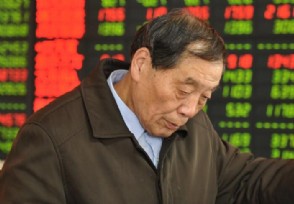
近期龙头股热点股有哪些 这两只个股登上龙虎榜
2020-12-05| 239 -

这则震撼的消息传来 金融股又有大利好
2020-12-05| 218 -
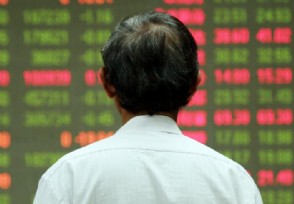
1000新债中签能赚多少 投资者如何提高中签率?
2020-12-05| 231 -
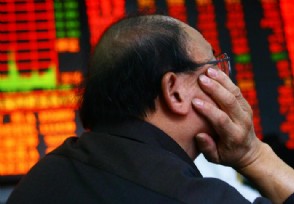
中芯国际是哪国的 公司最新股价是多少?
2020-12-05| 213 -

消费股票有哪些龙头股 这些上市公司关注度较高
2020-12-05| 242 -

最“差”基金:东吴行业轮动十年仍亏 曾为明星基金规模达到31亿
2020-12-05| 224 -
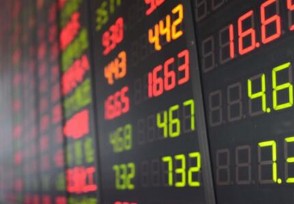
止盈止损什么意思 常见的方法有哪些
2020-12-04| 230 -
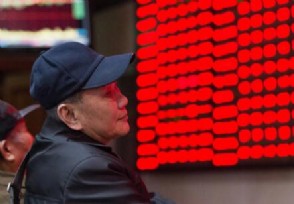
期货投资策略 相关的知识很少人会知道
2020-12-04| 203